Spin is an essential element when it comes to drilling. Whether you’re completing a home improvement project or on the job, having the right speed and torque can make all the difference. In this blog post, we will explore how quickly a drill can spin and provide useful tips to help you get the most out of your drill. Read on to learn all about what goes into creating the perfect drilling experience!
What Is Rotational Speed (RPM)?
When it comes to comprehending the speed at which a drill can rotate, it is crucial to consider the concept of rotational speed, also known as RPM. RPM stands for Revolutions Per Minute and is a measure of the number of times that the drill bit spins around its axis in one minute. Consider when picking a drill for any job – more RPM will usually mean faster, more productive drilling.
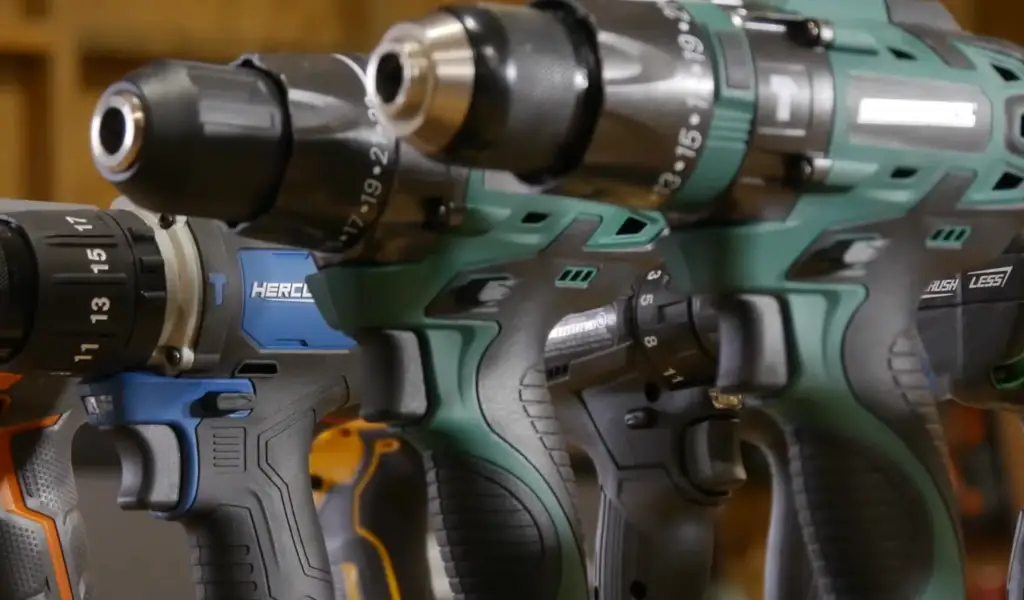
What Is the Difference in Turning Speed and Torque?
These factors have a crucial impact on the overall performance and efficiency of the drill, shaping its effectiveness and productivity. Turning speed is measured in RPM, just like rotational speed. Torque is how much force it takes for the drill bit to turn – this can be measured in foot pounds (ft/lbs). Understanding the difference between these two variables will help you find the right drill for any job.
Generally speaking, drills with high RPM and low torque are best suited for light-duty applications; whereas drills with lower RPM and higher torque are better suited for heavier tasks like drilling through concrete or metal.
Which is better? Torque or speed?
The answer to this question will ultimately depend on the job you’re doing. For light-duty applications, a drill with higher RPM and lower torque may be preferable. When it comes to tasks demanding more power, opting for a drill with lower RPM but higher torque is typically the most suitable choice. This ensures optimal performance while maintaining the desired level of strength.
Ultimately, it’s important to match the tool to the task – if you need to drill through metal, for example, you will need a higher torque setting than drilling through wood. Always make sure you know the job requirements before making your purchase to ensure that you get the right tool for the job.
No matter what type of drill or task you have in mind, understanding how fast a drill can spin and its other associated metrics is essential to finding the right tool for the job. With the right knowledge and tools, you’ll be able to get your project done in no time!
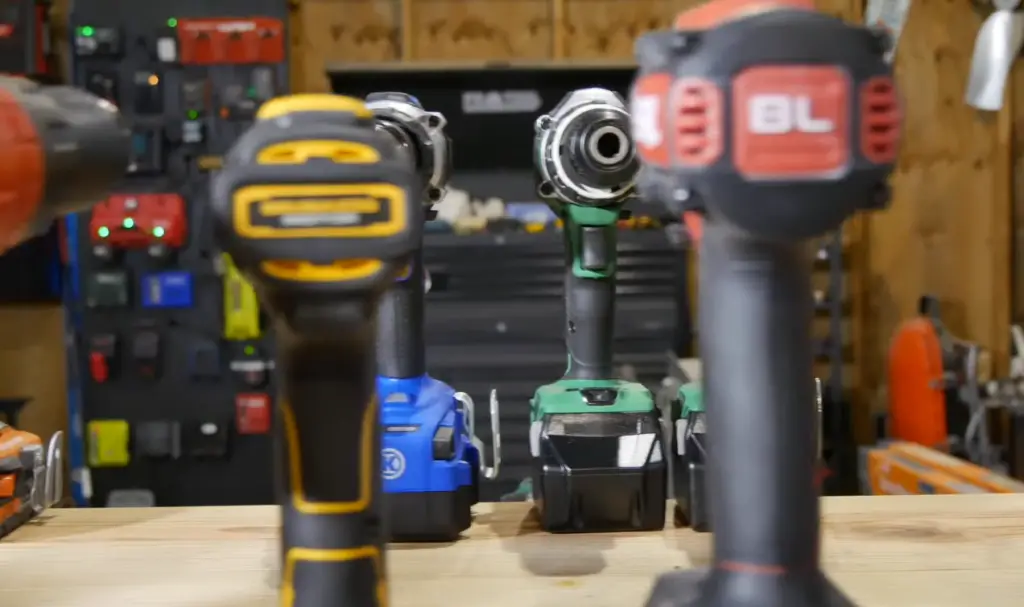
Why Do Some Tools Have Two Mechanical Speeds?
Certain come with two mechanical speeds: a low speed and a high speed. Low speed is typically used for drilling through materials such as wood, plastic, and metal; while high speed is better suited for drilling through harder materials.
Having the option of two speeds allows you to customize your tool to fit the job at hand. Knowing which speed to use for each application will help you get the best performance from your drill and ensure quality results.
Drilling RPM
When working out the RPM for your drill, it’s important to consider not just the motor speed but also the size of the chuck. The chuck is a component that holds the bit in place; its size will determine how much power is transferred from the motor to the drill bit.
The bigger the chuck, usually, the more power you will get – and therefore, the higher the RPM of your drill. Generally speaking, chucks come in three sizes: 3/8 inch, 1/2 inch and 3/4 inch. Knowing how to match chuck size with motor speed is necessary for finding the right RPM for any job.
Drill Torque and Rotational Speed
Understanding the relationship between drill torque and rotational speed is key to successful drilling. Generally, lower torque settings require higher RPM for optimal drilling performance, whereas higher torque settings can be used with lower RPMs.
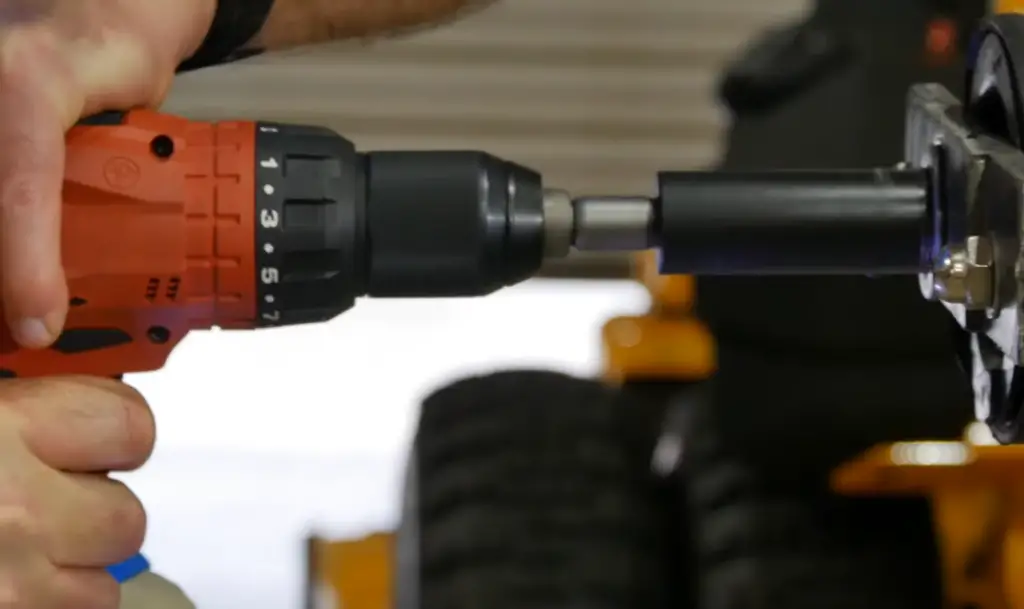
For light-duty applications like woodworking or plastic fabrication, a drill with high RPM and low torque is usually best; while for heavier tasks, a drill with lower RPM but higher torque is usually more suitable. Knowing the job requirements and matching your torque settings to them will ensure that you get the best results from your tool.
So, How Fast Does a Drill Spin?
This is a question many people may have when they are thinking about buying or using a drill. In short, the answer depends on how powerful the motor of the drill is. The power of the motor determines how fast it can spin and also how much torque it can produce.
As a general rule, most drills that you will find in your local hardware store will have a motor that spins up to 2,000 rpm. This is fast enough to complete most common tasks like drilling holes in wood, plastic, and metal. For more specialized tasks such as masonry or steel work, you may need a drill with a higher spinning speed. As an illustration, cordless drills generally provide a maximum speed of approximately 2000 RPM, whereas most corded drills operate at a speed of 3000 RPM. [1]
Additionally, keep in mind that drill speeds can be adjusted. Many drills allow you to adjust the speed of the motor using a dial on the body of the tool or with a switch on its handle. This is helpful when working with softer materials like plastic and wood, as it reduces the risk of damaging them because of too much friction caused by spinning at high speeds.
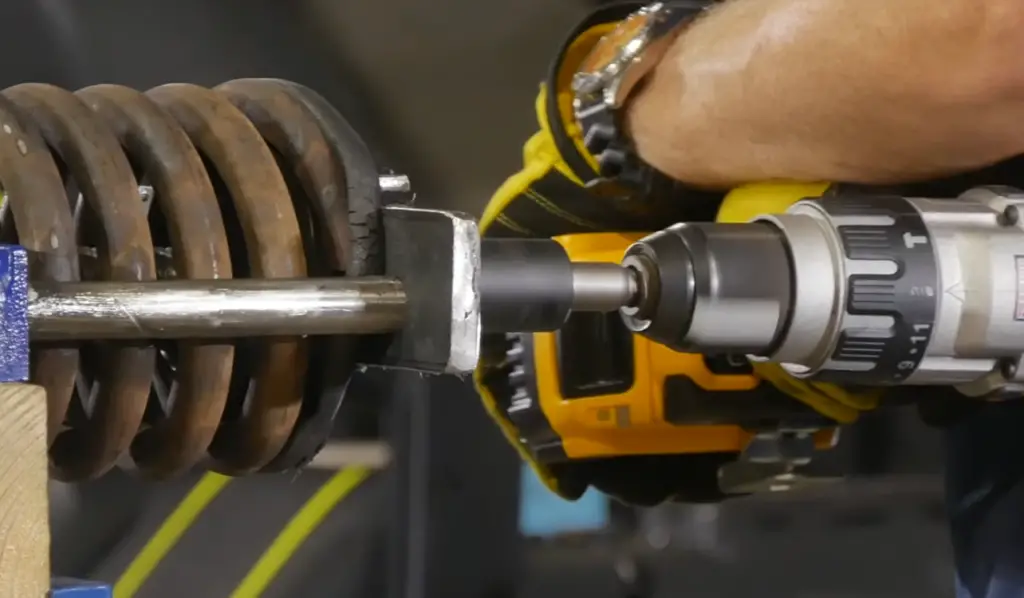
Finally, if you are ever unsure about what speed to use for a particular job, the best course of action is to consult your drill’s manual or reach out to its manufacturer and get their advice on the proper speed setting. This will ensure that you are using the correct setting for your application and getting the most out of your tool.
Keep These Tips in Mind When Choosing Your Drill
When choosing your drill, be sure to consider the kind of tasks you will need it for. If you plan on using it for lighter jobs like screwing and unscrewing bolts or nuts, then a low powered motor should suffice. On the other hand, if you need the drill for drilling masonry or steel, then a more powerful motor would be best suited to your needs.
Finally, if possible, try out different drills before making a purchase, and make sure to look for features like adjustable speeds and variable torque settings. This will give you the flexibility to adjust your tool according to any task you may need it for.
By following these tips, you can be sure that you are choosing the right drill for your needs and getting the most out of it when using it in your projects.
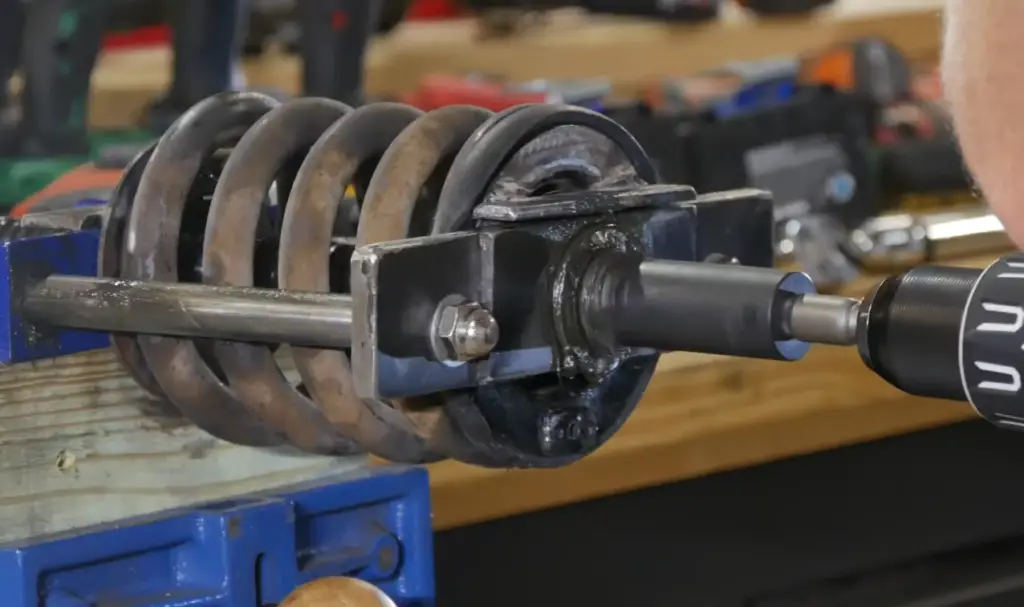
FAQ
What is the speed of a drill driver?
That depends on the model and brand of your drill driver. Many models have adjustable speed settings, so you can select the one that best suits your needs. Generally speaking, most cordless drills are capable of up to 1500 RPMs, while higher-end models can reach as high as 3200 RPMs or more. [2]
How fast does a Milwaukee drill spin?
When it comes to Milwaukee drills, the speed at which a drill can spin is dependent on the model. Some models are capable of rotating up to 2,000 RPM, while others may be able to reach 3,000 RPM or more.
It’s important to take note of what type of job you will be doing and the size of drill bit you will need to use. For instance, a large diameter hole may require more power than can be provided by a standard Milwaukee drill that runs at 2,000 RPM or less. If this is the case, then it’s important to opt for a model that has higher RPM capabilities such as 3,000 RPM or more. [3]
To summarize, Milwaukee drills are capable of varying speeds depending on the model. The speed of the drill can be adjusted manually but this should only be done after consulting with an experienced professional. Additionally, the speed of a Milwaukee drill can be affected by different factors such as the type and size of the bit being used, the material it’s drilling into, and how much pressure is being applied. By understanding these key factors, you can ensure that your Milwaukee drill is set up correctly for whatever job you are doing and that it’s running at an optimal speed.
What RPM does a Dewalt drill spin at?
The answer to this question varies depending on the model of Dewalt drill you have. Generally speaking, most standard models of Dewalt drills will spin at speeds between 450-2000 rpm. This might seem low, but keep in mind that rotational speed is only part of the equation when it comes to drilling; torque is also important. Depending on the type of material you’re drilling into, a higher RPM may not be necessary. [4]
What is a high speed drill?
A high speed drill is a tool used for cutting, drilling, or shaped objects into a workpiece. It usually operates at very high speeds — in the tens of thousands of RPM. The majority of drills use either an electric motor or compressed air to turn their cutting bit.
The speed of the drill ultimately depends on the type of motor used. Electric drills are generally faster, and can reach speeds of up to 30,000 RPM. Pneumatic drills use compressed air to rotate their cutting bits, and they usually operate at a much lower speed — around 6,000 RPM. [5]
Why do drills have 2 speeds?
Most drills have two speeds, commonly referred to as high and low. High speed is best used for drilling holes in softer materials like wood and plastic, while low speed is better suited for drilling into harder materials such as masonry or metal. The higher the speed of a drill, the more powerful it will be, allowing it to drill faster with greater precision and accuracy.
The two speeds also enable users to adjust the drill’s speed depending on the material they are drilling into. If you are drilling into a soft material like wood, it is best to use a high-speed drill setting so that you can make faster progress and minimize the splintering of the wood. With harder materials such as metal or masonry, a lower-speed drill setting is necessary to ensure that the material is not damaged or cracked during drilling.
Knowing how fast your drill can spin is essential for getting the most out of it and making sure you are using the correct speed for each job. This guide will discuss what factors determine how quickly a drill spins and provide tips on how to get the best results out of your drill.
Useful Video: What You NEED To Know About Drill Torque & Speed
Conclusion
So, how fast does a drill spin? You now know the answer! If you’re looking to buy a new drill for your DIY project or job, it’s important to understand the different speed settings and choose one that’s suitable for your needs. A good rule of thumb is to look at the range of RPMs available and select one that will handle the job you need it to do. If you’re unsure, don’t hesitate to consult with an expert before making your purchase. Have fun drilling!
In addition to comprehending the rotational speed of a drill, it is crucial to acknowledge other vital safety factors that must not be disregarded when operating a drill. For example, always wear protective eyewear when using a drill and ensure that the area where you’re working is free from debris or anything else that might cause an injury. Additionally, make sure to read all of the instructions associated with your drill before use and follow them closely throughout the project. Doing so will help you get the most out of your drill and prevent any accidents from occurring.
We hope this guide has given you a better understanding of how fast a drill spin and other important safety considerations. Now that you know what to look for and what precautions to take, you’ll be able to find the perfect drill for your next project. Happy drilling!
References
- https://ronixtools.com/en/blog/about-rpm-the-rotational-speed-in-power/
- https://www.wonkeedonkeetools.co.uk/cordless-drill-drivers/what-is-the-speed-of-a-cordless-drill-driver
- https://www.milwaukeetool.com/Products/2703-20
- https://powerplanter.com/drills-and-augers/drills/dewalt-dcd996p2/
- https://www.lcnprofessional.com/high-speed-drill-bit.aspx






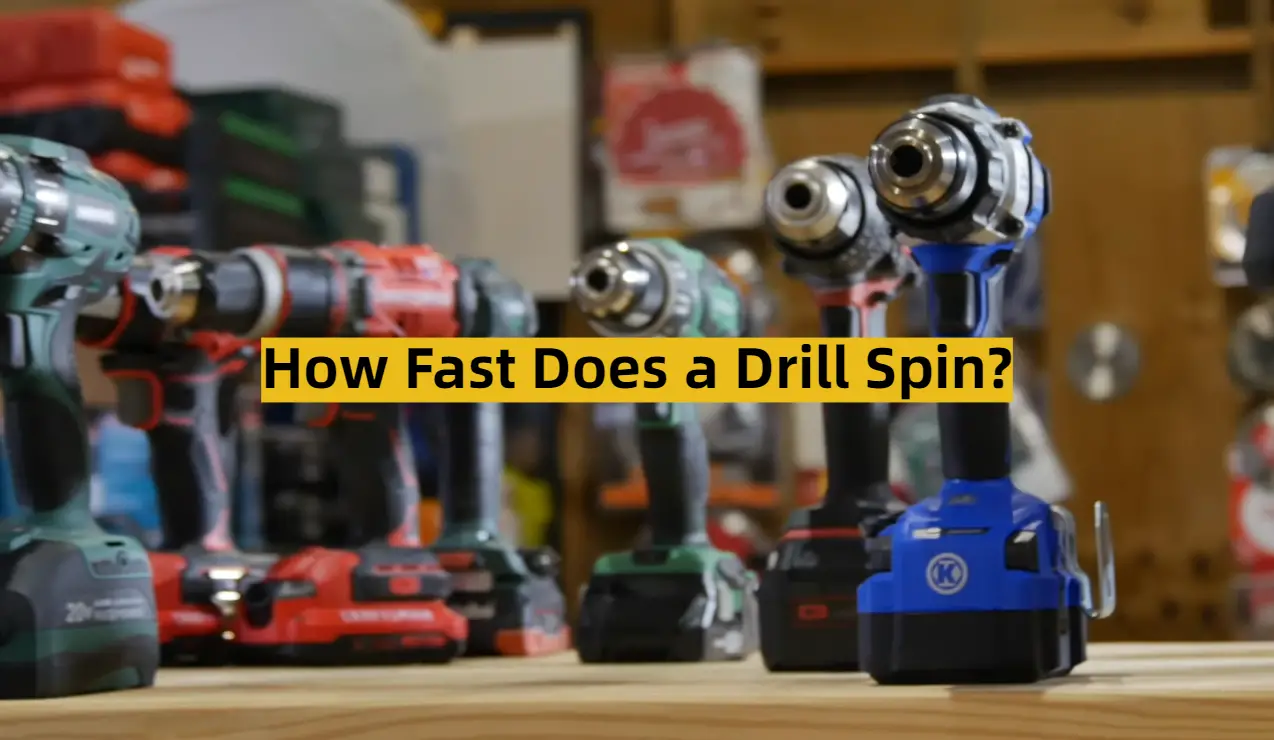




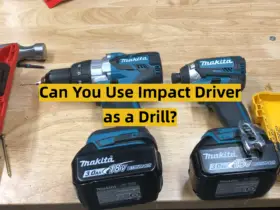

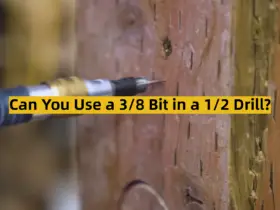
Leave a Reply